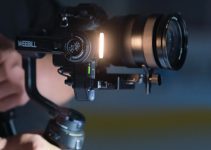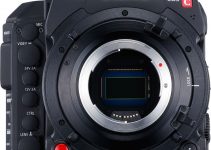Blackmagic cameras do a lot with a little. They are generally a lot more affordable than competing options considering the features they offer. Plus, they are good products minus the occasional bug.
Now, the latest Blackmagic offering is the Pocket 6K Pro, a surprisingly powerful compact cinema camera that offers an astounding array of resolutions and formats to choose from. You might want some quick advice on how to get a good, cinematic image out of the camera.
For that, Jason, better known by Goldwulf on social, is a filmmaker who has his own tips on how to get that cinematic picture when creating 4K content with the Pocket 6K Pro.
These are the settings that Jason uses for his productions, though feel free to stray if you have your own ideas.
A little bit of film history never hurt, and the explanation as to how we ended up at 24 fps is an interesting story. The first thing to understand is that 24 fps wasn’t chosen for any particular reason beyond technical issues and requirements that led us there.
The first cameras were hand-cranked and had inconsistent rates. When sync sound became a serious concern they came up with a motorized system that stuck with 24 fps since it was the slowest you could run to get smooth motion. Anything faster would be more expensive since it would take more film.
Working with narrative projects, Jason has these basics:
- Blackmagic RAW
- Constant Bitrate at 12:1
- 6K Resolution
- Dynamic Range: Film (Log)
- Shutter Angle
This is your core format and options to get a nice, decently compressed image that holds a lot of dynamic range and detail. The 6K resolution has benefits in reframing in post as well as downsampling to improve 4K output. He also likes shutter angle as it is the traditional option for cinema cameras.
On the last page of setup is an important page that includes a lot of calibration settings. Before starting on a new project Jason always uses these options to remap the pixels and calibrate the motion sensor. This should help eliminate stuck or dead pixels in your image. The motion sensor should ensure you are getting an accurate horizon line.
Frame rate selection should be obvious by now – go with 24 fps. For whatever reason it has been the standard and if you want that cinema look go with the standard. Shutter speed will then be at 1/48 second or 180 degrees.
ISO should be at the native settings in an ideal shoot. This would be ISO 400 at the low setting and ISO 3200 for high. ND filters in the Pocket 6K Pro are incredibly helpful here.
To ensure a nice, accurate capture you should use a gray card to lock in your white balance on location. Auto is fine, especially if you use raw, but it is better to nail it on set than try to correct in post. You can also use a light meter to get a reading and manually set your white balance. A pocket-friendly pick is the Lumu Light Meter for iPhone.
[source: Goldwulf]
Order Links:
- Blackmagic Design Pocket Cinema Camera 6K Pro (B&H, Amazon, Adorama)
- Lumu Light Meter for iPhone (B&H, Amazon), Adorama)
Disclaimer: As an Amazon Associate partner and participant in B&H and Adorama Affiliate programmes, we earn a small comission from each purchase made through the affiliate links listed above at no additional cost to you.



